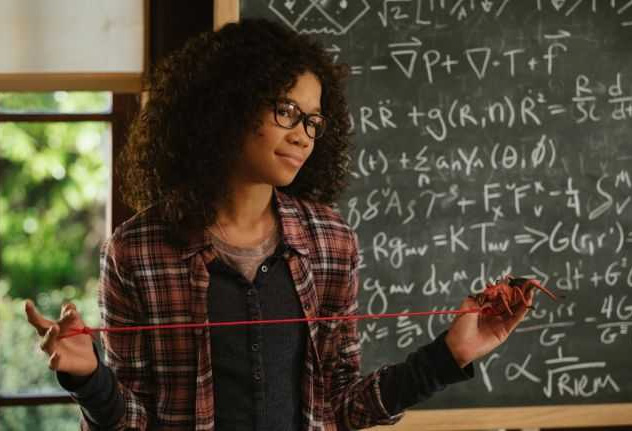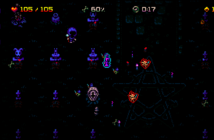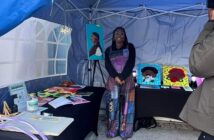
Storm Reid’s character continues to show the shift from what was once a polarized theme of male heroes to intelligent and strong female leads.
Credit: @girlscout
Pervading the silver screen in a myriad of colors and sights in the portrayal of the latest book adaptation is “A Wrinkle in Time.” The film has a star-studded cast supplanted with household names such as Oprah Winfrey (Ms. Which), Chris Pine, Reese Witherspoon (Ms. Whatsit), Mindy Kaling (Ms. Who), Michael Pena (Red) and Zach Galifianakis (The Happy Medium ) to name a few.
Although these big names play an integral role in the adaptation, they are secondary to their younger counterparts Storm Reid (“12 Years a Slave”: Emily), Levi Miller (“Peter Pan” 2015: Pan) and Deric McCabe (“Hold On”: Paul Duran).
These actors, while young and mostly inexperienced, bring the movie to a place of nostalgia. Several periods throughout the tenure of the second and third act, the scenes become reminiscent of the 90s Disney Channel movies, like “Hocus Pocus” and “Zathura.”
The film’s plot centers itself around 13-year-old Meg Murry (Reid), who is trying to adjust to school and life following the disappearance of her father and astrophysicist Alex Murray (Pine). She is compounded with the same adjustments any high school student might have to face coupled with an awkwardly silent home environment with her mother, Kate Murray (Gugu Mbatha-Raw – “Black Mirror”) and adopted brother and prodigy Charles Wallace (McCabe).
The brother and sister duo are joined by Meg’s classmate Calvin (Miller) who embark on a journey of discovery, self-reflection and excitement. This is one of the most debatable components of this movie as the themes presented are layered lightly under a film of defamiliarization that capitulates through the dialogue. This literary method takes the elements of everyday life and masks them in ways that are strange and uncommon. In doing so, it revitalizes what it covers, making it seem new and fresh.
The components that have caused strife and contention between the director Ava DuVernay (“Selma”) and movie critics is the secularization of the film as it strayed from the source material. The original book was a science fantasy novel written by Madeleine L’Engle in 1962. L’Engle’s original novel won several awards including the Newberry Medal, Sequoyah Book Award and Lewis Carroll Shelf Award.
The novel stuck closer to religious components that gave it cohesion and firmer ground with its audiences then and now. The lack of this has given critics and audiences several points of contention with the movie, albeit this is the second film adaptation, the first coming alive in 2003 direct to T.V.
Despite the reception related to the plot, the movie is visually stunning as the effects team manipulated every scene on screen with hues and saturation of every color on the spectrum. Although much of the special effects are not all new and groundbreaking, what audiences are entreated to is a journey that envelopes at every turn.
Coupled with the visual effects is Disney’s anticipated soundtrack that includes a titillating score composed by German composer Ramin Djawadi, who is previously known for his work in “Iron Man,” “Pacific Rim” and “Game of Thrones”. The soundtrack collaborates with artists like Sade, Kehlani, Sia, Demi Lovato and DJ Khaled, who each give every scene a pathos-like connection. In tandem with the cinematography, each scene either liberates or adds a layer of heaviness to viewers.
The older actors give great performances, while the younger ones give it their all during each act; however, none of the performances were as breathtaking as the young Charles Wallace portrayed by Deric McCabe. McCabe’s character alone causes him to shine above the rest. The young prodigy always articulates his language in a way that makes him seem wiser than his years, while still managing to evade a sense of arrogance.
Charles Wallace is allowed to have the most range of emotions as he is child-like in his view of the future but grounded in ways of the world. In retrospect, McCabe gives a lot of the scenes of the movie meaning because of his versatility and commitment to the role. Reid’s portrayal of Meg Murray is suitable as her character is less dynamic while still being the most tortured of all by the loss of her father.
Meg’s message, however, is different from others, as audiences see the insecurities of her character that juxtapose similar fears experienced by adults. Meg’s character shows viewers that there are parts of every individual that cannot be hidden, yet there is an innate silent voice of hope that no one will notice them.
It seems apparent that the director and writer of the novel intended for there to be increased dialogue in the wake of what is presented in the material. However, this adaptation doesn’t connect with that veracity given a portion of audiences’ reception. Movie aggregate Rotten Tomatoes have given the film a critic score of 40 percent while the audience score sits a scathing 34 percent as of March 16, 2018, one week after release.
As a stand-alone film, without any exposure to the source material, as something that is not disposable but needs a chance to prove itself. The adaptation deserves a chance to explain why it is deserving of viewers’ attention. One method the director could have taken to achieve this could have been to take away some of the visual effects to give more depth to each character arc.
DuVernay’s vision of the film is seen in the young Storm Reid because she highlights a young African-American heroine from mixed parentage who is troubled yet intelligent, understanding and courageous. What the film lacks is the establishment of the strength of Storm’s character which could have been brought out by spending more time with Meg gaining the strength to stand in the absence of her father.
Often films of this nature focus on buy-in from audiences who manipulatively complain about their need to be pleased visually and not be bogged down by scenes that require a lot of mental energy.
“A Wrinkle in Time” is not a new story by any means but gives much credence to contemporary themes present today as the world continues to look toward the heroic potential of all people. In tandem, the film explores science in ways that pay homage to many theories at play in film and the applied sciences today. An example of this comes from the late Stephen Hawking postulated several theories regarding The Big Bang and creation, the influence is recognizable and plays well into the plot of the film.
Despite being berated by critics and the low audience reception, “A Wrinkle in Time” has a great deal to offer and is worth the time and money to watch with children and with childlike anticipation.





